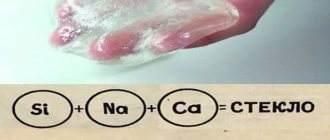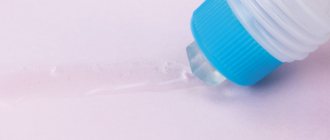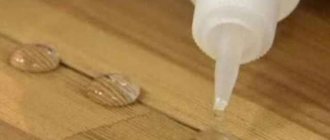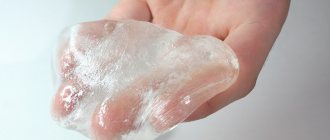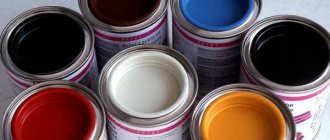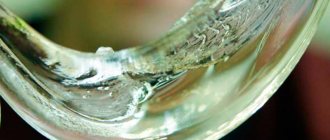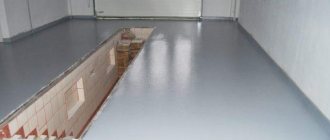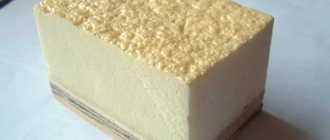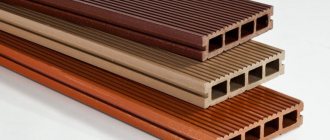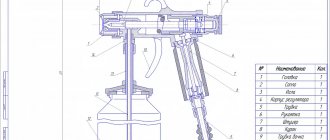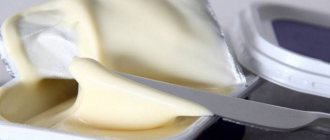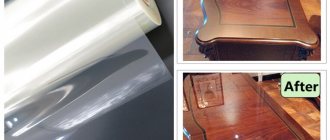SHARE ON SOCIAL NETWORKS
FacebookTwitterOkGoogle+PinterestVk
In modern construction industry, there are many finishing and auxiliary materials in the form of putties, primers and protective mixtures, but along with them there is a known product that has been tested for centuries, called liquid glass. The use of silicate mixtures is very wide, which makes them universal and unique. More details about the areas of use of this substance can be found in this article.
Liquid glass is a universal product with a wide range of applications
Liquid glass: composition and properties of the material
The term “liquid glass” appeared due to the properties of a watery mixture when solidified to transform into a solid transparent substance. Its popularity is due to its adhesive and waterproof characteristics. The remedy was invented back in the Middle Ages. Its production is based on the reaction of silicic acid and alkaline compounds. The invention was patented only in 1818 by the German chemist-mineralogist Jan Nepomuk von Fuchs.
Liquid glass consists of a solution of sodium hydroxide and silica-containing elements
The classical composition of the substance has remained virtually unchanged centuries later. It contains silica-containing elements and sodium hydroxide solution, which can dissolve in water. That is why liquid glass is also called soluble glass. Externally, it is a colorless (sometimes with a greenish or yellow tint) transparent substance of varying consistency. The formula of liquid glass is a compound of alkali silicates and, accordingly, has the following form:
- Na2O(SiO2)n – sodium silicate;
- K2O(SiO2)n – potassium silicate.
To get an idea of what liquid glass is, just remember your school chemistry course. The numerical ratio of SiO2 molecules to Na2O or K2O molecules is called the silica module, which determines the solubility and a number of other properties of liquid glass. The n index indicates the number of silicon dioxide molecules.
The material is obtained by fusing quartz sand mixed with soda or sodium sulfate and coal. This happens in special glass melting furnaces that operate continuously. Technologically, the melting process is similar to the production of insoluble glass. Liquid glass is also produced by autoclave treatment of amorphous silica with high concentration caustic alkali.
The substance has waterproof and adhesive properties
Liquid glass: characteristics and application of the material
The versatility of the product is due to the mass of functions that liquid glass performs in construction (and not only), in particular:
- repels moisture, eliminating the negative effects of water on building materials, thus acting as a hydrophobic insulator;
- destroys bacteria, fungi and mold, prevents their proliferation, being an excellent antiseptic;
- used to fill pores on various surfaces;
- neutralizes static electricity, acting as an antistatic agent;
- serves as a thermal insulator and ensures fire resistance of the material.
Important! Liquid glass is not recommended to be applied to brick, since the composition of the product has a destructive effect on the porous structure of the brick surface.
Liquid glass is an indispensable material in construction
The wide range of applications of liquid glass and its functionality are due to a number of specific characteristics:
- ease of penetration of the material into microscopic cracks and pores, their complete filling, making it easy to apply to concrete and wooden surfaces;
- minimal material consumption and low cost compared to other waterproofing products;
- long service life, starting from five years;
- high moisture resistance;
- degree of protection depending on the number of layers of impregnation;
- the applied solution forms a highly reliable waterproofing layer.
Potassium or sodium liquid glass: applications and differences
The main feature of liquid glass is its wide range of applications. As mentioned above, it may contain two minerals - sodium or potassium. This is the main difference between the two types of material, but there are still differences in their areas of application.
Potassium liquid glass is often included in paints and varnishes
Potassium-type liquid glass is most often used in paint and varnish production, since this substance copes well with various atmospheric and chemical loads. This component is quite often included in silicate paints.
The instructions for using sodium liquid glass provide for its addition to adhesive solutions, since the material is characterized by high astringent properties. It is this composition that provides good waterproofing protection of surfaces. The sodium-based option helps to increase the strength characteristics of concrete structures. In addition, it favors their fire resistance and provides high antiseptic properties.
Thus, sodium liquid glass has a wider range of properties, and its application, accordingly, is much wider. At the same time, the cost of potassium glass is higher, since it resists acids, moisture and atmospheric influences much more effectively. After its use, no whitish spots characteristic of a sodium solution remain on the surface.
Liquid glass: application in various fields
The process of producing soluble glass produces a relatively thick liquid. It is produced in various dosages, depending on which the physico-chemical, mechanical, operational and other properties of the materials change. Liquid glass is a chemically active substance that can interact with elements of various shapes - from solid to gaseous. The main properties are increased stickiness and viscosity. The product can be stored for quite a long time in a securely closed container, since when air enters, a reaction occurs, as a result of which it decomposes. Heating also leads to decomposition, releasing amorphous silica.
Silicate glue can be used as an antiseptic before wallpapering
Good to know! A subtype of liquid glass includes ordinary school or so-called stationery silicate glue. Its consistency is slightly thinner than the material used in construction. It is often called liquid glass glue.
Silicate glue is often used to treat surfaces before painting or wallpapering, using it as an antiseptic. The substance has antibacterial properties that prevent the development of bacteria and kill old colonies of microorganisms. A silicate solution, when applied to wood, concrete or paper, increases their fire-resistant and moisture-resistant qualities. Therefore, it is used not only in construction, but also in artistic wood processing.
Liquid glass is used in the production of materials for sealing pipes, when installing PVC tiles and linoleum, and impregnation of the fabric with this substance gives it heat resistance and fire resistance. The product is also suitable for restoring items made of porcelain and glass. These are just a few areas of application of liquid glass; we will consider the areas of its use in more detail below.
Widespread use of liquid glass in construction
Given its high moisture resistance, adhesion, fire resistance and a number of other properties, liquid glass is most often used in construction. The list of works is very wide, the main ones are the following:
Liquid glass is added for waterproofing to mortars
- Painting and waterproofing of concrete foundations. For this purpose, sodium silicate is used in proportions of 1:2 with water, where two parts are water. The solution is applied with a brush in two layers, allowing time for the previous layer to dry completely.
- Waterproofing of underground premises – basements and ground floors. For the purpose of impregnation inside basement rooms, use a solution of liquid glass with water in a ratio of 1:2, and apply several layers.
- Adding sodium silicate to mortars is the most common application of liquid glass in construction. Depending on the final result, different proportions are used, but the classic recipe is 100 liters of mixture per 1 liter of liquid glass.
- Waterproofing of swimming pools. Liquid glass applied to the surface of the bowl polymerizes, forming a reliable water-repellent shell. Apply two layers: the first is absorbent, the second is control. Consumption is 0.5 liters of material per 1 m².
- Liquid glass as the main component of bactericidal grout. Adding a substance to the grout protects the seams between the tiles from the formation of mold and fungi. Proportion: 1 part potassium silicate to 3 parts grout.
- The use of cement and liquid glass as components of a quick-drying adhesive for joining ceramic tiles, as well as as a fixing agent for types of construction work.
- Using glue to fix linoleum and carpet to the floor ensures reliable installation of the floor covering.
Sodium silicate is added to grout to make it bactericidal.
Application of liquid glass in mortars
Liquid glass is used in construction to improve the quality characteristics of concrete. It is especially advisable to use the product in cases where constant exposure to high humidity is expected on a cement structure. This extends the life of the building, preventing its destruction.
Helpful advice! A mixture of sand and cement prepared by yourself with the addition of a silicate solution in its pure form without water will have high adhesion and harden quickly. This composition is similar in characteristics to alabaster.
Therefore, the use of liquid glass in cement mortar is especially desirable for the following types of work:
- erection of a foundation during construction on land with close groundwater;
- construction and improvement of premises located underground;
- lining of stove and stone chimneys outside the building;
- construction of premises with high air humidity: baths, swimming pools, showers;
- creation of decorative artificial reservoirs.
Adding liquid glass to concrete improves its quality characteristics
In addition, silicate solution, when added to concrete, makes it invulnerable to bacteria, mold and fungi. If the cement composition is used for external work, then it is diluted with 10% liquid glass. The proportions of sand and cement are 1:3.
Sodium silicate is added to concrete solutions to waterproof the material. It is indispensable in the construction of basement structures, and is used not only for covering floors, but also for applying to walls and ceilings. The ratio of materials in this case will be 1:10.
The use of liquid glass for waterproofing various objects
Liquid glass is used in almost all areas. Most widely - in construction, and primarily to impart or enhance the waterproofing properties of various surfaces. The use of the material creates waterproofing for foundations, basements, and swimming pools. Therefore, its presence is advisable wherever contact with water is expected.
According to the instructions for use, liquid glass for construction (when preparing a pure solution) is diluted in water in a ratio of 1:4. One of the disadvantages of glass coating is the impossibility of painting the surface after applying the silicate solution, since a smooth film forms on top, which simply does not adhere to paints and varnishes. If it is necessary to impart waterproofing properties to concrete, then for this purpose a proportion of 1:8 should be observed.
To waterproof concrete, it is necessary to dilute a pure solution of liquid glass in water in a ratio of 1:8
Liquid glass is used to treat the walls of attics and basements. It should be noted that the universal product can be applied both from the outside of the object and inside it. With the help of the composition they provide protection from moisture to the walls of wells. This type of work is carried out in two stages. First, a thin layer of pure sodium silicate is applied, the subsequent layer is a concrete mixture with the addition of liquid glass.
The method of using liquid glass for waterproofing a pool is somewhat different. To do this, the composition is applied in one, but thick, layer; step-by-step processing is also possible. This type of work inside the structure will prevent the destruction of walls from constant exposure to water. External treatment will protect against the penetration of groundwater.
Related article:
Liquid glass for concrete: the versatility of silicate mixture
Composition of the solution, scope of application, rules of use. Drawing up proportions. Cost of the mixture and customer reviews.
Paints and varnishes - production
Properties of liquid glass
The properties of aqueous solutions of alkali metal silicates and their ability to enter into physical and chemical interactions with various substances are largely determined by the properties of anhydrous silicates - silicate glasses. Anhydrous alkali metal silicates have been studied much better than their aqueous solutions. There are several hypotheses about the structure of silicate glasses.
All hypotheses assume the presence in glass of a highly polymeric, aperiodic, but not devoid of individual ordered microregions of the framework, which brings the glass closer to the crystalline structure.
Various points of view on the issue of the internal structure of silica glass can be reduced to two most important ones: the Zachariazen spatial grid theory and the Sosman-Tarasov chain hypothesis. According to most researchers, the discrepancies between these ideas are more qualitative than quantitative. The structure of glasses is better described by one theory or another, depending on their composition and complexity.
According to modern concepts, alkali silicate glasses are a special case of the systems considered. They consist of silicon-oxygen complexes that carry a negative charge, the degree of complexity and branching of which can be different, and metal cations (Na+, K+, etc.). These glasses are characterized by the presence of two types of bonds: ionic-covalent (Si-O bond) and ionic (Me-O). As the study of the structure of a number of silicates has shown [74], with a high content of alkali oxides, silicates consist of alkali or layered radicals - Si-O-Si, cross-linked with alkali oxide cations. In this case, the properties of glasses will be determined by ionic bonding. With a low content of alkali oxides, frame (continuous) structures are formed, and the properties of the glasses will be determined by the ionic-covalent bond.
A detailed study of the phase diagram of the Na20-Si02 binary system established the existence of three specific sodium silicates: 2Na20-Si02, Na20-Si02 and Na20-2Si02. According to P.N. Grigoriev and M.A. Matveev, the number of individual crystalline sodium silicates detected by modern methods also includes sodium trisilicate Na20-3Si02. The solubility of sodium silicates in water deteriorates as their modulus increases.
According to the ideas of S.K. Dubrovo and O.A. Shmidt, the process of interaction of sodium silicates with water and their dissolution occurs in two stages. At the first stage, sodium ions of the glass are exchanged for hydrogen ions of the solution, as a result of which a layer of silicic acid is formed on the surface, which, together with the silica of the original glass, forms a protective layer on its surface. At the second stage, the protective layer interacts with the resulting alkaline solution, causing the dissolution of silicic acid on the surface.
It was found that when sodium silicates interact with water, all silicic acid that goes into solution is in the molecular degree of dispersion. At the same time, according to M.A. Matveev, glassy alkali silicates pass into solution without hydrolysis and dissociate in solution into complex hydrated alkali metal ions and silica - oxygen anions.
The Na20-Si02-H20 system was studied in the temperature range 10-450° C. With the gradual evaporation of aqueous solutions of sodium metasilicate, according to R. Eiler [1] and J. Weil, hydrated metasilicates of various types can be crystallized, for example Na2Si03-5H20 ; Na2Si03-6H20; Na2Si03-8H20 and Na2Si0s-9H20, with melting points of 72.2, respectively; 62.85; 48.35 and 47.85° C. They are very soluble in water and are crystalline in nature.
Solutions of sodium silicates in water have been studied by many researchers, but their structure has not yet been sufficiently elucidated. Most often, liquid glasses are considered as lyophiles - other colloidal systems. Since views on the structure of lyophilic colloidal systems have recently changed greatly, ideas about the structure of liquid glasses are to a certain extent outdated. Just a few decades ago, lyophilic colloids were considered heterogeneous nonequilibrium systems, but now they are universally recognized as true equilibrium solutions of polymers [16J.
Recent ideas about the polymer structure of inorganic glasses in general and alkali silicate glasses in particular give grounds to consider liquid glasses as solutions of inorganic polymers. Their properties are determined by the mobility and hydration of alkali metal cations and the branching of polymer silicon-oxygen anions. Glasses differ from real polymers of organic origin in that their polymer part (framework) has the character of a highly polymeric anionic radical. M.A. Matveev and A.I. Rabukhin note that a feature of silicate and other glasses is that their anion is polymerized and the cation is monomeric. E. Thilo points out that what is specific for inorganic polymers is the presence not of polymer molecules, but of polymer ions. A.I. Rabukhin, who studied the physicochemical properties of liquid glasses, points out the duality of their nature. In terms of the dependence of the density of liquid glasses on their composition, in terms of compressibility, refractive indices and partly equivalent electrical conductivity, they behave like aqueous solutions of electrolytes, and in terms of the properties of viscosity, which sharply increases with concentration, like polymer solutions.
The degree of dissociation of silicates in aqueous solutions is low. The reason for this is that the free charge of the polymer anions can increase so much that the remaining cations purely electrostatically prevent dissociation.
Liquid glass has a high reactivity. As noted in the specialized literature, fewer substances that do not react with liquid glass are known than substances that interact with it.
Interaction of liquid glass with acids
Since sodium silicates are salts of very weak silicic acid, the latter must be displaced from these salts by all water-soluble inorganic and organic acids. This produces a silicic acid gel with astringent properties. Here is a diagram of one of these reactions (according to P. N. Grigoriev and M. A. Matveev):
Na2Si03 + 2HC1 = 2NaCl + H2Si03.
According to our data, most acids interact very vigorously with liquid glass, forming flocculent precipitates - cremigel. Hardening with an induction period occurs only with a large dilution of glass (up to a density of 1.1) and a low concentration of acids (10-20%), but the resulting gel is of low strength.
A number of compounds (A1C13, Fe2(S04)3, A12(S04)3, Na2C03, etc.) undergo hydrolysis with the formation of the corresponding acid, which then interacts with liquid glass (the case of a two-step reaction), but all of them for one reason or another cannot be used to harden liquid glass.
Interaction with hydrofluorosilicic acid.
Hydrofluorosilicic acid is a strong dibasic acid and is one of the complex compounds. In an aqueous solution it undergoes dissociation and hydrolysis in several successive stages. Large quantities of H2SiF6 are produced technically by absorbing SiF4 with water, which is a by-product of the production of superphosphate and phosphoric acid. This is a very cheap material, the raw materials of which are unlimited.
Conventionally, the composition of the H2SiF6 solution, according to I. G. Ryss, can be represented as a mixture of HF, SiF4 and H20.
In an aqueous solution, HF dissociates:
2HF^2H'+2F'.
The equilibrium position of this reaction shifts to the right due to the binding of fluorine ions into the relatively strong complex ion SiFe:
2F' + SiF4 dist <— SiFe-
Silicon fluoride undergoes hydrolysis:
SiF4 + 2H20 ^ SiO, hydr + 4HF.
The properties of the aqueous solution will be determined by the equilibrium conditions of these basic reactions. In an alkaline solution, part of the acid is neutralized instantly, and then a process of decomposition of SiF| occurs over time; according to the equation
SiF6^SiF4 +2F'.
When hydrofluorosilicic acid interacts with liquid glass, the reaction rate is apparently determined by the decomposition of SiFej and subsequent hydrolysis of SiF4, during which silica gel and hydrofluoric acid HF are formed, which then reacts with sodium silicate.
Conventionally, in general terms, the reaction of chemical interaction between H2SiF6 and liquid glass of various modules can be written as follows:
For single module glass
H.,SiFc -1- 3NaSiOs + 7H30 - 6NaF + 4Si (OH)4; (7)
For two-module glass H2SiF„ + 3Na2Si20B + 13НгО - 6NaF + 7Si (ОН)4. (8)
The orthocremic acid formed during the reaction is released in the form of a gel, causing the mixture to harden. Silicon, which is part of H2SiF6, is involved in the formation of additional orthosilicic acid molecules, which increase the binding capacity of the system. Hydrofluorosilicic acid of 8% concentration was used as a hardener. In this form it is most often supplied to consumers. Experimental data on the duration of gelation of liquid glass - H2SiFe compositions at different densities of liquid glass and a variable amount of acid are shown in Fig. 28.
A very important and interesting feature of fluorosilicic acid is its ability to cause gelation in concentrated solutions of liquid glass with an adjustable induction period, and until the moment of coagulation, the physical properties of the solution, in particular its viscosity, remain practically unchanged. With increasing density of liquid glass, the duration of gelation increases. The strength of the resulting gel is high, but it decreases with decreasing density of liquid glass and increasing acid content.
The compositions and properties of LSC with hydrofluorosilicic acid are given in Chapter. 5.
| Min 50 |
| ,1 | | I (5S m |
| 30 |
^OBg/cm3
Go
W 60 80 100 120 cm3 Koli.”sspZp HzSlFe
Fig. 28.
Duration of gelation of compositions consisting of 100 cm3 of liquid glass of various densities and a variable amount of
H 2 SiF „ (8% concentration)
Salts of hydrofluorosilicic acid - fluorosilicates also harden liquid glass, interacting with it according to the same schemes (7), (8 ). An example of this group of compounds is sodium fluoride, Na2SiFe. It is used in the construction industry to produce self-hardening acid-resistant cements based on liquid glass [61] and can be used to prepare self-hardening molding sands based on liquid glass.
Interaction of liquid glass with alkaline earth metal hydroxides and calcium silicates
According to P.N. Grigoriev and M.A. Matveev, liquid glass easily and quickly reacts with hydroxides of alkaline earth metals to form gel-like reaction products.
The reaction, for example, of barium hydroxide with liquid glass proceeds according to the following scheme:
NaX> • nSi02 - f Ba(OH)2 + 6H20 =
= 2NaOH + (i - 1) Si02 + BaSi03 -6H20.
The same authors note that the reaction of liquid glass with hydroxides of other alkaline earth metals occurs in a similar way:
Ca(OH)2, Mg(OH)3I Sr(OH)2.
Here it is also necessary to consider the possibility of a two-stage reaction between liquid glass and substances that form hydroxides of alkaline earth metals in an aqueous medium.
From construction practice, the ability of tricalcium and dicalcium silicates, which are the mineralogical components of Portland cement, is known to undergo hydrolysis with a sufficient amount of water with the formation of Ca(OH)2 and various calcium hydrosilicates during cement hardening.
We present a diagram of the reactions of hydrolysis of tricalcium and dicalcium silicate according to the data of [61] and V.F. Zhuravlev:
2 (ZCaO • Si02) + 6H20 = ZCaO • 2Si02- ZN20 + ZCa(OH)2;
2CaO • Si02 + nH20 = Ca(OH)2 + CaO • Si02 (n - 2) H20. (9)
Both hydrolysis reactions proceed slowly, especially the second.
A large amount of dicalcium silicate (more than 50%) is contained in self-disintegrating slags of ferrochrome production, as well as in waste resulting from the production of alumina from nepheline ores, the so-called nepheline sludge. In this regard, we studied pure synthesized ZCaO SiO2 and |3-2CaO SiOa, Portland cement containing these compounds in large quantities, as well as ferrochrome slag and nepheline sludge, which contain dicalcium silicate. The materials were ground to approximately equal specific surface area (specific surface area of C3S was 3200 cm2/g, specific surface area of |3-C2S was 3400 cm2/g). The dispersity of ferrochrome slag and nepheline sludge was close to the dispersity of other materials: the specific surface of the slag (ground) was 3100 cm2/g; and nepheline sludge - 3000 cm2/g. Charts of hardening of compositions consisting of liquid glass (M = 2.9 and M = 2.4, p = 1.48 g/cm3) and powdered hardeners taken in a ratio of 1: 1 (by weight) are presented in Fig. 29.
With a modulus of 2.9, compositions with tricalcium silicate (C3S) harden instantly during their preparation. Therefore, the hardening curve for C3S in Fig. 29, a
not shown. Dipotassium-ciium silicate of the ^-modification, nepheline sludge and ferrochrome slag harden with liquid glass in the presence of a well-defined induction period. The hardened compositions had a uniform appearance and fairly high strength. When mixing Portland cement with liquid glass of module 2.9, partial setting of the mass is immediately observed with the formation of lumps. There is no induction hardening period. Further hardening of the composition proceeds very slowly. This nature of hardening is apparently explained by the heterogeneity of the composition of Portland cement: some mineralogical components (such as tricalcium silicate, calcium aluminates) react with liquid glass very quickly, others slowly.
A decrease in the modulus of liquid glass from 2.9 to 2.4 led to a slowdown in the rate of interaction of the components and significantly changed the nature of hardening of the compositions (Fig. 29, b). In this case, not only C2S, but also C3S and Portland cement harden at
| Rice. 29. Hardening kinetics of liquid glass–calcium silicate compositions: A - M = 2.9; b - M = 2.4; / - p— C, S; 2 - nepheline sludge; 3 - ferrochromium slag; 4 — Portland cement; |
There is a noticeable induction period, and the time interval between the beginning and end of hardening is relatively short.
Judging by the data presented, pure dicalcium silicate, as well as ferrochrome slag and nepheline sludge, provide the most favorable character of hardening of the compositions and satisfy the basic requirements for hardening agents. Hardening of the molding mass occurs almost simultaneously throughout the entire volume. The same data indicate the possibility of using tricalcium silicate and Portland cement as hardeners in combination with low-modulus glass.
Dicalcium silicate does not occur independently in nature. Therefore, from the point of view of practical use, cheap and accessible materials containing C2S in large quantities are of particular interest: ferrochrome slag, nepheline sludge, electric furnace, open hearth and blast furnace slag; slags obtained during the production of ferromanganese and ferrovanizing, etc.
| 2130 C |
| Liquid |
| 600 |
| 1200 |
| 1800 |
| Rice. 30. Polymorphic transformations (Bredig curve) |
| 2SH |
| "WITH C ,s |
Let's take a closer look at materials containing C2S and their properties.
Properties of
dicalcium silicate and materials containing it
Dicalcium silicate.
Calcium orthosilicate (2CaO • Si02) exists in four modifications: a, a', p and y. The polymorphic transformations of dicalcium silicate are clearly illustrated by the M. Bredig curve shown in Fig. 30. When heated, the following order of polymorphic transformations is observed: y^-a'-ta, and when cooled, a - v a' - vp -> - 7 [35].
A.—C2S is stable at temperatures above 1447° C, at a temperature of 1447° C it becomes
a'—C2S.
Ee'-C2S when heated, starting from the y-modification, is stable in the temperature range 850-1447 ° C; cooling a'-C2S never produces 7-C2S; at 670°C p-C2S is formed, and the latter slowly transforms into y-C2S at temperatures below 525°C. Density of a-C2S 3.4 g/cm3.
P-C2S is a meta-stable modification. When cooled, pure P-C2S transforms into the y-modification. Density p—QS 3.28 g/cm3. In the presence of impurities, this transition may be delayed or may not occur at all. ^
Y-C2S is formed only upon cooling of other modifications and represents the most stable phase. It is stable at temperatures below 780-830° C. The density of y-C2S is 2.97 g/cm3.
Phase transitions: melt a, a ^ a' and a' ^ p are reversible, and the transformations p-v y and y-a' go only in one direction.
Due to the large difference in density, the transition of p-C2S to y-C2S is accompanied by an increase in volume by approximately 12%, which leads to self-disintegration of slag
Metallurgical slags.
A large amount of dicalcium silicate is contained in self-disintegrating slags of ferrochrome production, electric furnace, open-hearth and blast furnace slags. Self-disintegrating slags are of interest
| Table 10. Average chemical composition of slags from ferrochrome production at various factories in the USSR Factory | Chemical composition, % | Fluctuation of the specific surface of the slag, cm'/g | |||||
| Sao | Si O, | A1.0, | MgO | Sg. ABOUT, | FeO | ||
| Aktobe | 50—54 | 25,0— | 5,1— | 9.0— | 3,1— | 0,30— | 1450— |
| 29,5 | 6.5 | 10,2 | 9,6 | 1.7 | 1800 | ||
| Serovsky | 49— | 26,2— | 6,5-8 | 9,5— | 2—3 | 0,82— | 1350— |
| 52,3 | 27,7 | 10,0 | 1,4 | 1800* | |||
| Chelyabinsk | 48,0— | 19,5— | 4,0— | 7 5— | 3,0— | 0,10— | 1300— |
| 52,3 | 30,0 | 6,7 | 12,0 | 12 5 | 3,3 | 1700 * | |
| Zaporozhye | 52—55 | 26—29 | 4—7 | 8—10 | 2—8 | 0,4— | 1300— |
| 0,9 | 2700 |
| * After the commissioning of slag separation and sifting workshops at these factories, its specific surface area is 2000-2500 cm2/g. |
For two reasons. Firstly, the tendency of slag to self-disintegrate indirectly indicates a high content of dicalcium silicate in it. Secondly, self-disintegrating slag is a finely dispersed material and does not require additional grinding before use.
Self-disintegrating slags from ferrochrome production. Such slag is available in large quantities at the Chelyabinsk Electrometallurgical Plant, Aktobe, Serov and Zaporozhye ferroalloy plants. The mineralogical composition of ferrochrome slag is as follows [20]: 65% y—2Ca0Si02; 5% p—2CaO Si02; 20-25% spinel Mg0Al203, FeO (Al, Cr)203.
The chemical composition of ferrochrome slag from various plants is presented in table. 10.
In table Table 11 shows the data we obtained on determining the specific surface area, humidity, chemical composition and activity of slag samples from all four ferroalloy plants. For the slags of the Chelyabinsk and Aktobe plants, it was possible to establish the duration of their storage in the dump and thereby reveal the influence of the age of the slag on its properties.
The slags from the four plants differ slightly in chemical composition. Within the same plant, the chemical composition and basicity of different batches of slag are characterized by fairly high stability.
The activity of the slag is mainly determined by its age (duration of storage), other things being equal. In most cases, an indirect indicator of the age of slag can be its moisture content. As humidity increases, activity decreases.
The higher the specific surface area of the slag, the greater the activity, as can be judged by comparing two samples of Zaporozhye slag (see No. 16 and 15 in Table 11).
Self-disintegrating electric furnace, open-hearth and blast furnace slags.
Electric furnace and open-hearth slags can also serve as hardeners for liquid glass, however, the chemical composition of the slags, even for the same grade of steel, varies from heat to heat (Table 12), the degree of dispersion of the slags and, accordingly, their activity are different, which, naturally, complicates the production of LSS with stable properties. Open-hearth self-disintegrating slags are similar in composition and properties to electric furnace slags.
Self-disintegrating blast furnace slag in its initial state has a specific surface area of 600–1000 cm2/g and hardens with liquid glass very slowly (2.5–3.5 hours). After grinding the slag to a specific surface of 4000-5500 cm2/g, its activity increases significantly - the hardening time of the compositions is 45-60 minutes. There is no doubt that blast furnace slags after finishing can be used as hardeners for mixtures on liquid glass, which is also confirmed by the data of Kh. I. Vishnyakov and the work of the French Technical Center for Foundry.
Nepheline sludge.
Nepheline sludge is a by-product of the production of alumina from nepheline ores. A large amount of this material is available at the Volkhov Aluminum Plant named after. Kirov, Pikalevsky Alumina Refinery named after. 50th anniversary of the USSR and the Achinsk Alumina Refinery. The raw material resources of nepheline sludge are practically unlimited.
In terms of mineralogical composition, nepheline sludge contains 80-85% P-2Ca0Si02. In this regard, the sludge as a hardener behaves in the same way as pure p-2CaO Si02, which is confirmed by curves 1 and 2
rice. 29.
Data on the chemical composition of nepheline sludge at two plants (Table 13) over a long production period indicate minor fluctuations in the composition and high stability of this material.
In terms of mineralogical composition, nepheline sludge and ferrochrome slag differ mainly in that in the first, dicalcium silicate is in the p-form, and in the second, in the y-form. The p-form is stabilized, i.e., it is prevented from transitioning to the y-modification by impurities such as oxides of boron, chromium, phosphorus, as well as the presence of small amounts of alkali. Apparently, the increased content of alkalis in nepheline sludge (up to 2.2-2.8%) has a stabilizing effect on P-C2S, preventing its self-disintegration.
From the above it is clear that the most promising materials for curing liquid glass are self-dispersing
| Table 12. Physico-chemical properties of samples of self-disintegrating slag from electric furnace production Steel grade | Chemical composition (basic oxides), % | CaO Si O, | Specific surface area, cm2/g | Activity, million | ||||
| Sao | Si O, | MPO | AIsO, | MgO | ||||
| 110G13L 110G13L 35L | 52,08 56,0 59,43 | 22,74 21,60 19,81 | 0,90 2,10 0,50 | 3,35 4,20 | 13,75 11,85 | 2,29 2,6 3,0 | 2440 1680 900 | 38 13 65 |
Flowing ferrochrome slag and nepheline sludge. In principle, it is possible to use metallurgical slags from other industries for this purpose - electric furnaces, open-hearth furnaces and blast furnaces, but they are inferior to the first two. materials on activity and stability. The processes of hardening of liquid glass on liquid glass with dicalcium silicate and materials containing it will be discussed in a separate section.
| Table 13. Chemical composition (%) of nepheline sludge samples Plant | Sao | Si O, | AI2Os | Fe,0, | Na20+K20 | P. p. p. |
| Volkhovsky | 54,37 | 30,42 | 3,45 | 2,90 | 2,26 | 2,30 |
| Pikalevsky | 56,54 | 29,67 | 2,96 | 2,98 | 2,79 | 2,55 |
Purpose and scope of liquid glass in other areas of production
Construction is the main area of application of liquid glass, but it is far from the only one. The examples below demonstrate this.
Helpful advice! The sodium silicate solution hardens very quickly, almost instantly, so experienced builders recommend not adding it to the cement composition, but using it as an impregnation on finished structures.
Sodium silicate can be used to waterproof wood
The use of liquid glass glue is wide and universal. The high degree of adhesion of the silicate solution allows it to be used for gluing various materials, including fiberboard, thin sheets of chipboard, plywood, ceramics, and cardboard.
Liquid glass is used to remove dust from the surface of cement floors in garages and other utility rooms. The work is carried out by impregnating the base with a mixture of water and liquid glass. The solution penetrates the concrete 3-4 mm deep, where it polymerizes, forming a smooth surface on top that does not collapse. Thus, cement dust does not form on it.
Silicate glue is used for waterproofing wood. Liquid glass is widely used for wood. The product is mixed with water and applied to the surface where a moisture-protective layer is formed. The coating also prevents the penetration of air and insects.
Liquid glass is used in gardening. An aqueous solution of this substance is used to treat cuts on trees after cutting down branches. A dense airtight layer protects plant wounds from dangerous bacteria and prevents the process of rotting.
Plumbers use liquid glass to connect pipes as a sealant
Silicate adhesive is used to create an airtight coating in plumbing fixtures. As a sealant, liquid glass is applied at the junction of water supply and sewerage pipes. For this purpose, use the product in its pure form.
Full waterproofing
The use of liquid glass for waterproofing porous materials has some peculiarities. However, the method of doing the work is simple and does not require special skills. For waterproofing, wood is treated with liquid glass, concrete, plaster and brick are impregnated.
How to use liquid glass to waterproof a surface:
- Initially, you need to prepare a solution that will prime the surface. Silicate, water and cement are mixed in equal proportions.
- Impregnation of concrete begins only after the base of the surface is completely cleared of old building material.
- Treating wood with silicate is a little more difficult. The surface of wooden decorative items must be cleaned down to the natural base to ensure high-quality adhesion of the materials.
- You should not apply a hydrophobic coating to a wet surface - complete or partial peeling will occur in the future.
- The layer of silicate solution should not exceed 3 mm. In this case, the drying time will be minimal, and the adhesion will be better maintained.
The material is often used as a screed. This is especially true for concrete floor coverings. Wall treatment with liquid glass is carried out according to the principle of puttying or painting. Walls and floors require special care if there is no auxiliary coating, but with liquid glass these problems completely disappear.
The use of liquid glass in everyday life, creativity and decoration
Liquid glass helps solve a large number of household problems, which has made it popular in everyday life. It is used to remove scale, clean dishes, remove stains from clothes, glue glass and ceramics, and use it to protect metal from corrosion. For example, for wear resistance and protection from the effects of fire, costumes and curtains in the theater, as well as curtains in public institutions, are covered with liquid glass. Reviews from housewives characterize it as a universal remedy in the fight against scale and fumes. For example, the oldest frying pan can be restored to its original appearance. A simple recipe is used for this.
Liquid glass is dissolved in boiling water in a ratio of 1:25 and a frying pan is boiled in the solution for 2 hours. Some of the carbon will go away, and the rest will be easy to clean with a knife and a metal sponge. The effect of the solution will be enhanced by adding soda ash and laundry soap. In this way you can easily clean any dishes made of metal, porcelain and glass. The cooking time can be reduced to 10 minutes.
The use of liquid glass in decoration allows you to create elegant stained glass windows and mirror panels with mosaics. In addition to the above, silicate solutions are used to organize self-leveling floors in art design.
Using liquid glass you can clean dishes from burning and scale
Helpful advice! Using silicate glue, earthenware and glass products are restored. However, it should not be used for gluing dishes intended for food.
Liquid glass is actively used in creativity. With its help you can easily glue a wide variety of materials: paper, cardboard, leather, fabric, rubber. Therefore, this substance is often simply irreplaceable in needlework. Liquid glass is an excellent tool for enhancing shine and protecting the surface of cars. However, in this case, a special composition is used, which differs from the formula of conventional silicate glue.
Other Applications
We have already found out what silicate coating for floors and walls is. Depending on the specific application of the material, the time required for the layer to dry is determined. But there are also areas of non-standard application of liquid glass:
- Painting with silicate glue is used to treat walls and floors for antibacterial purposes.
- Using silicate glue you can lay tiles, tiles and mosaics in the bathroom, kitchen, swimming pool, bathhouse, shower.
- The method of sealing cracks and joints during construction work is another area of application of the material.
- Sodium glue can be used for wood processing and in furniture production, for example, instead of nails and a construction stapler.
- In gardening, liquid glass solution is used as an antibacterial agent. The treated area where branches or broken bark are cut is carefully covered with the substance.
- Housewives often use a liquid based on silicate glue to clean the most dirty surfaces. This is the main and practically the only way to clean soot from pots and pans.
- Mixtures made from liquid glass are actively used in the process of cleaning walls from old finishing materials. Old paint, plaster, and putty are great for scrubbing off.
- Furniture breakdowns and malfunctions can be easily and, most importantly, quietly eliminated thanks to liquid glass putties.
- There is practically no additional decorative finishing on the glass base, since the surface repels the influence of any foreign substance.
The characteristics of silicate glue and its use are so simple in the context of construction and repair work that they do not require special skills possessed by the master. Just read the instructions on the package or watch the training video.
The scope and method of using sodium-based glue, that is, liquid glass, are varied. In addition to industrial use, there were also measures for use in home life. Finishing already decorated surfaces at this stage of processing is quite appropriate. Many construction professionals recommend the use of silicate mortar at almost all stages of finishing and processing.
Application of liquid glass on concrete (2 videos)
Products from different manufacturers (26 photos)
Features of application: how to apply liquid glass
Before applying the product, the surface must be thoroughly cleaned of any contaminants that may reduce absorbency. Surfaces treated with silicate solution must dry for at least 24 hours. According to the instructions for use, liquid glass is applied in several layers, with sufficient time allowed for each layer to dry. The surface is treated with a product similar to thick paint - using a brush or roller. If it is necessary to create a protective coating, the material is applied with a plaster spatula.
All work must be performed sequentially, in accordance with the instructions. You can use liquid glass yourself, saving on fees for the services of specialists. First, the surface must be thoroughly cleaned of stains, debris, dirt, and old coating. Next, apply the first layer of the product with a roller. After it has dried, the surface is covered with a second layer.
Liquid glass must be added to the concrete solution immediately before work
If it is intended to use a concrete solution with the addition of sodium silicate, then it is prepared immediately before use, since the mixture hardens quickly. You need to apply it within 20 minutes. Strict adherence to proportions is important. The slightest mistake can cause the surface to crack and collapse.
While working, you must wear special clothing and use personal protective equipment. Upon completion of the process, you must thoroughly wash your hands and tools before the remaining material dries.
How is a floor screed made?
Many people often have a problem with how the floor is treated with liquid glass, if we are talking about a screed. The way of doing work for wood and concrete is different in concept up to a certain stage. For example, to treat a wood floor, specific processing methods are used: first, concrete is poured and wait for complete hardening, only then a hydrophobic screed based on liquid glass is applied.
If the screed is planned on concrete, then the pouring technology is as follows:
- The screed is applied to the concrete floor immediately after cleaning and treating the surface.
- The solution is laid out in equal portions, and leveling is done by distributing the mass using a wide metal spatula.
- It is necessary to allow the mixture to dry, then make the final leveling of the surface.
- The last stage - the floors are covered with a special varnish.
In the case of covering a concrete floor with liquid glass, there is absolutely no possibility of further finishing. Even minimal decor will not be possible. The treated base cannot be painted or covered with linoleum. Such a floor for residential premises does not look aesthetically pleasing, so the screed is carried out in industrial premises.
On video: a quick method of applying liquid glass.
Compliance with Gosstandart. How much does liquid glass cost?
Sodium liquid glass is produced in accordance with GOST 13078-81. The document states that it is a viscous substance of gray or yellow color without impurities, having the following characteristics:
- the density of the material should be from 1.42 to 1.43 g/cm³;
- the content of sodium oxide concentrate is from 7.9 to 8.8%;
- the presence of calcium oxide should not exceed 0.2%;
- the part of silicon dioxide is from 21 to 24%;
- the silicate modulus value is 3%;
- the content of sulfuric anhydride should not be higher than 0.15%;
- the presence of iron and aluminum oxide is permissible - up to 0.25%.
Liquid glass is an order of magnitude cheaper than most impregnations and adhesives
One of the advantages of the material is its affordable price. It is much cheaper than other synthetic adhesives and impregnations. The cost is influenced by several factors, in particular density, modulus and the amount of liquid glass purchased. The solution is packaged in special containers that are tightly closed to prevent the product from drying out. You can buy the material at any hardware store. If you need a small amount, it is recommended to buy liquid glass in containers or on tap.
Helpful advice! Liquid glass applied as an adhesive for linoleum will prevent the formation of fungi and mold under the coating. Such protection is not provided by other adhesives, for example, Bustilat or PVA.
Popular manufacturers of liquid glass, material price
In the case when a large volume of work is planned and liquid glass is supposed to be used, the price matters, because a lot of material will be needed. In this situation, it is better to order it directly from a large manufacturer or supplier, saving on intermediaries. The most popular large enterprises include Metterra, Oxium, the factories Ivkhimprom, Kontakt, and CJSC Trading House Stekloprodukt. Small enterprises such as Alektich also specialize in the production of liquid glass. In the retail chain, this substance is presented not only in its pure form, but also as part of all sorts of impregnations and mixtures for finishing work.
Price gradation table for pure solution in accordance with GOST 13078-81:
| Material density, g/cm³ | Module | The cost of material in a volume of less than a ton, rub. | Cost of material in volumes from 1 to 10 tons, rub. | Cost of material over 10 tons, rub. |
| 1,27-1,29 | 2,9 | 10 700 | 10 200 | 10 000 |
| 1,38-1,42 | 2,9 | 11 200 | 10 600 | 10 300 |
| 1,45-1,46 | 3 | 11 500 | 11 200 | 11 000 |
| 1,47-1,48 | 3,1 | 12 000 | 11 700 | 11 500 |
Thus, the larger the volume of material purchased, the lower the price will be. High-density liquid glass has a more significant cost.
Main characteristics
What exactly is liquid glass used for and what characteristics does it have? First of all, it should be noted that the material is an aqueous solution of silicate salts. Versatile areas of action allow it to be used for varying degrees of processing.
We list several positive characteristics of liquid glass:
- It is used in many areas of construction and finishing work. Any surface with any characteristics can be processed.
- Hydrophobic advantage, which allows you to protect the surface from moisture and water. It is the liquid glass primer that prevents the material from becoming saturated with water.
- Minimum hardening time regardless of application conditions and methods.
- Antiseptic effect. As a result of application, the coating with liquid glass protects the surface from the appearance of fungus and mold.
- Hardening occurs in a short time. If you apply it evenly and do it in several thin layers, the effect will be amazing.
- Liquid glass for floors and walls is used in many cases as a means that forms a fire-resistant layer.
- It is used to protect surfaces from external influences, in particular from the action of chemicals and substances that can be used to treat surfaces.
- Sodium liquid glass is an environmentally friendly building material that has no effect on the human body.
The properties of liquid glass have such a wide positive scope that the material is used in any field of construction work. At the same time, the price does not exceed acceptable standards.
